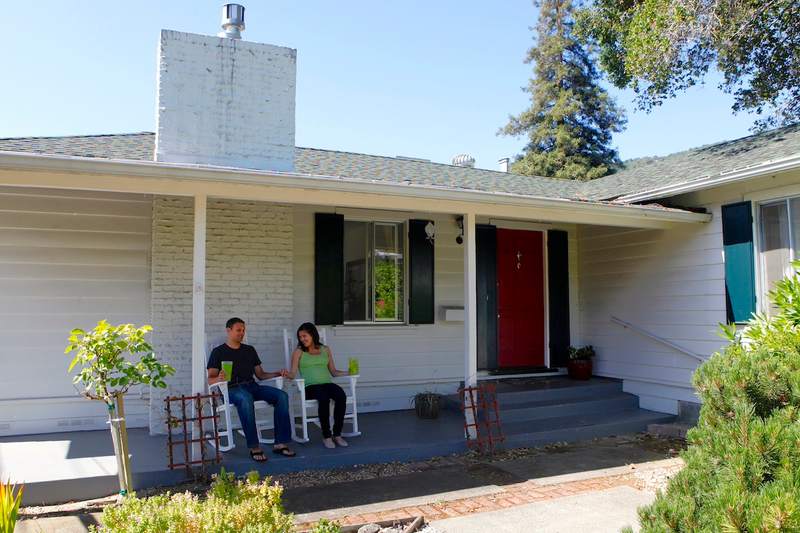Eligible active-duty U.S. military members, veterans and the unmarried surviving spouses of veterans often find that a VA loan is the ideal home loan option for them. Insured by the U.S. Department of Veterans Affairs, VA loans don’t require a down payment, making the dream of homeownership more easily attainable for those who qualify for this type of mortgage.
While you’ve likely heard of VA loans before, you may not realize that there’s another option that allows non-military members to benefit from the attractive terms of a VA loan. A joint VA loan is a mortgage made out to two or more people, only one of whom must meet the requirements of a VA loan.
Let’s take a closer look at what a joint VA loan is and who might benefit from this type of mortgage loan.
What Is A Joint VA Loan?
A joint VA loan is a type of non-conforming loan that allows two or more people – at least one of whom has to be an eligible adtive-duty service member, veteran or surviving spouse – to apply for and be on the loan together. All co-borrowers of a joint VA loan have equal responsibility in ensuring that monthly payments are made on time.
Those applying for a VA loan with their spouse can apply for a standard VA loan rather than a joint VA loan. Even if only one spouse has military service, married couples are considered one entity for the purpose of VA loans. The only time when it would be considered a joint loan with a spouse is if both members of the couple are veterans who are both using their entitlement. This wouldn’t come up often.
There are three main situations surrounding joint VA loans, depending on the eligibility status of the co-borrowers:
- One VA-eligible applicant can apply with one or more non-military borrower.
- Two or more VA-eligible applicants apply without all applicants using their entitlements.
- Two or more VA-eligible applicants apply with all applicants using their entitlements.
Joint VA Loans Vs. Other VA Loans
The main difference between a VA loan and a joint VA loan is that unmarried, non-military borrowers can apply as a co-borrower with a qualified applicant. In these cases, the Department of Veterans Affairs only insures the portion of the loan that’s being taken out by the VA-eligible borrower.
Because of this, lenders assume more risk when taking on a joint VA loan. To offset this risk, some lenders may require a down payment for the portion of the loan not backed by the Department of Veterans Affairs.
Take the first step toward the right mortgage.
See what you can afford.
See What You Qualify For
Buy A Home
Discover mortgage options that fit your unique financial needs.

Refinance
Refinance your mortgage to have more money for what matters.
Tap Into Equity
Use your home’s equity and unlock cash to achieve your goals.
Who Might Benefit From A Joint VA Loan?
There are several scenarios that may indicate a joint VA loan could be a good option for you. Often, joint VA loans are used by those who:
- Don’t have the income to qualify on their own: All applicants’ income can be considered when applying for a joint VA loan, potentially making it easier for those with less income to get approved.
- Are using their VA entitlement on another home: By applying with another eligible applicant, a borrower whose entitlement is tied to another property can ensure that more of their loan is guaranteed by the VA.
- Have too much debt to qualify on their own: Applying with another borrower who has more income or less debt may help bring your debt-to-income (DTI) ratio under the threshold that many lenders want to see.
Pros and Cons of Joint VA Home Loans
There are pros and cons to taking out a joint VA loan, and it’s important to carefully consider these factors when deciding if this type of mortgage is best for you.
Pros
Joint VA loans can allow you to buy a home with a friend or family member. Also, because all applicants’ income is considered, you may qualify for a larger loan amount with a joint VA loan than you would be able to on your own.
Cons
While standard VA loans don’t usually require a down payment, lenders may require one on the portion of a joint VA loan being taken out by a non-military member. Additionally, you may need to pay a VA funding fee unless you qualify for an exemption.
How To Apply For A VA Joint Loan
The process of applying for a joint VA loan is similar to the process of taking out a standard VA loan. The first step is to find a lender that offers this type of mortgage. You can search the VA’s website to find an approved joint VA loan lender. You may want to shop around to find the lender that will give you the most favorable interest rate and VA loan fees.
When you’re ready to apply, you’ll fill out an application with your lender and provide the required financial documentation, including tax returns, bank statements and W2s. You’ll also need to get your VA certificate of eligibility.
Joint VA Loan Requirements
Like with all loans, joint VA loan lenders have certain requirements they want borrowers to satisfy in order to approve their mortgage. Typically for a VA loan, lenders want to see a minimum credit score of at least 580 and DTI ratio of 43% or less, but these numbers can vary from lender to lender.
The Bottom Line On Joint VA Loans
Joint VA loans allow non-military members to enjoy the benefits of VA loans, including no down payments and lower credit score requirements. With joint VA loans, all co-borrowers assume responsibility for the monthly mortgage payments. When a non-military borrower applies with a VA-eligible applicant, the VA only backs the portion of the loan being taken out by the borrower who qualifies for VA benefits. Because of this, lenders often require a down payment on the non-military applicant’s portion of the loan.
Take the first step toward buying a house.
See what you qualify for.

Victoria Araj
Victoria Araj is a Staff Writer for Rocket Companies who has held roles in mortgage banking, public relations and more in her 15-plus years of experience. She has a bachelor’s degree in journalism with an emphasis in political science from Michigan State University, and a master’s degree in public administration from the University of Michigan.












